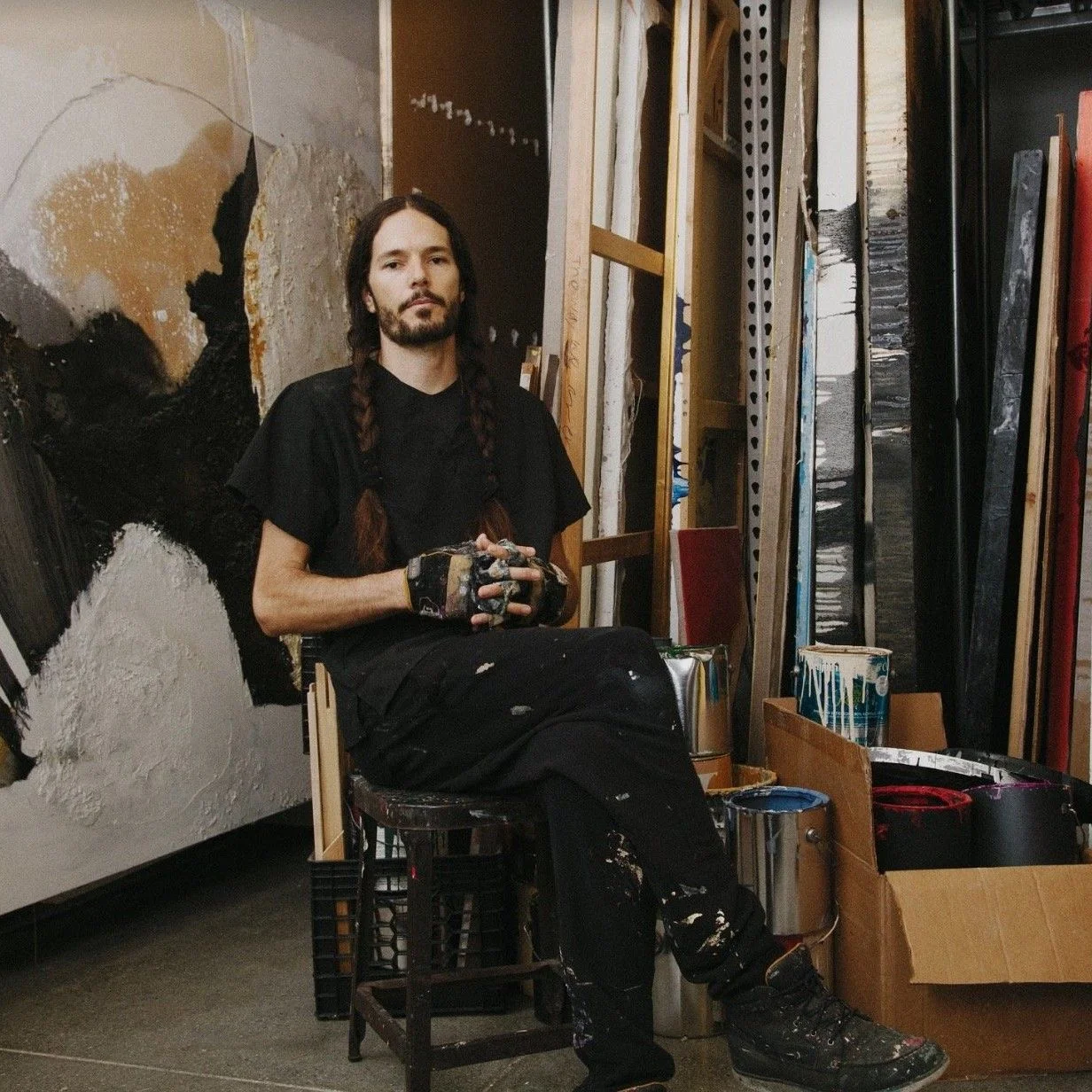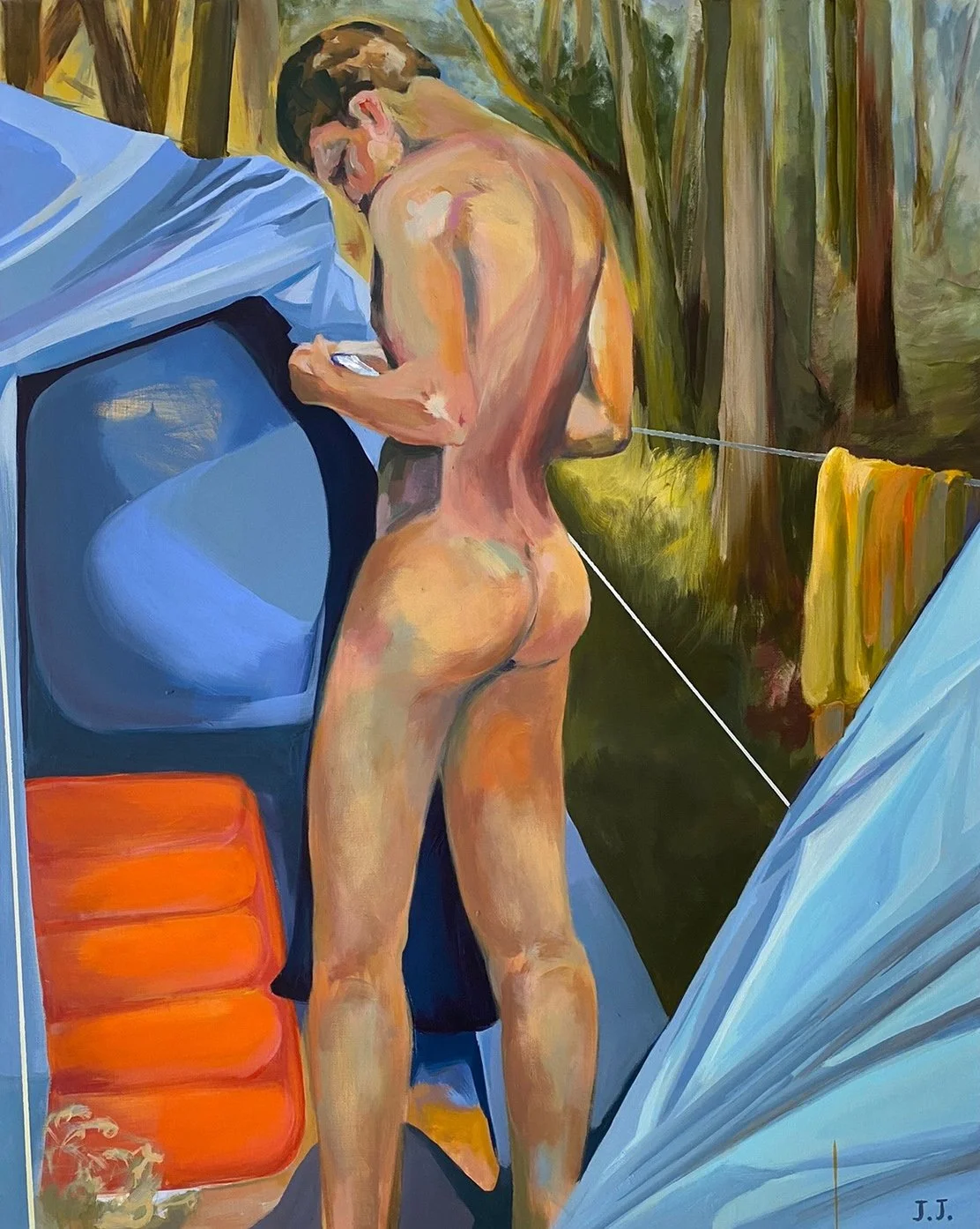Doron Langberg
“Likeness”
New York, 245 Tenth Avenue
Doron Langberg creates large-scale portraits from observation of family, close friends and lovers. Langberg’s visualizations of queerness—both his own and those of the many queer subjects depicted—move beyond the traditional shorthand of signs and easily recognizable queer iconographies. Instead, Langberg contextualizes queer sexuality and intimacy within larger narratives of everyday life.
In these large-scale paintings, Langberg’s figures appear in repose, coming in and out of focus against their surroundings. They are often set in domestic spaces or outdoors in the privacy offered by seclusion, with naturalistic depiction superseded by near abstraction. For example, TM in the Meat Rack depicts a friend in the wooded area conjoining Fire Island’s two queer communities, locally known as a site for cruising. The nude figure lies prostrate with his torso receding into the loosely-rendered forest. The environment, atmosphere and physicality of paint become expansions of the subject’s emotional world, as portions of the canvas are left seemingly unfinished, visually demanding the viewer to engage the image and fill in the blanks. Langberg’s group portraits describe relationships that, while close and intimate, create open-ended narratives. In Sarah and Lea, he depicts an interior scene capturing a caring moment between friends. The figure at the top of the composition retracts into herself and gazes at the floor, while patterned upholstery and cascading plant tendrils outline her figure and underscore her introspection. A second figure at the bottom pauses from scrolling on her phone to look up in recognition of her friend's mood.
Langberg’s process begins with his smaller-scale portraits based on direct observation. The intimacy entailed in the live model process builds on the close connections Langberg already has with the people he paints, forming the substrate of each portrait. The improvisational painting session generates ideas about color and mood, and serves as source material for the larger works. For him, describing the likeness of his subjects, often a lesser concern in contemporary figurative painting, carries great meaning. “If I’m painting a friend, and it looks like them,” Langberg states, “it’s a measure of my empathy, and of the painting’s potential to feel like a living person.” Color, texture and materiality engender a time-based experience for the viewer, where observation of each canvas feels like time spent in the presence of another.
In Langberg’s paintings, queer lived experiences speak to bodily sensations and emotional states universal across social categories. In an era characterized by political misrepresentation and the omnipresence of digital media, Langberg cherishes the physicality of human touch—from a loved one, or on the surface of a canvas—as a testament to the potency of painting as a way to show life as it is lived every day and the camaraderie that emerges from such a practice.







